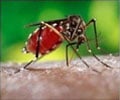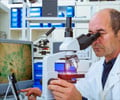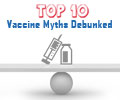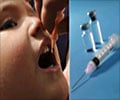Scientists at the University of Copenhagen are developing new vaccines that can protect against a range of deadly viruses, bacteria and other disease-causing agents.
Scientists at the University of Copenhagen are developing new vaccines that can protect against a range of deadly viruses, bacteria and other disease-causing agents, and can even be used to cure certain cancers.
The new vaccines are based on 'InVacc' platform that consists of a chain of amino acids attached to a gene of the virus being vaccinated against.This genetic cocktail is then inserted into an incapacitated flu-like virus such as the adenovirus and injected into the body, where it triggers a broader and more aggressive immune response, enabling the immune system to quickly seek out and destroy the disease when it invades.
The original DNA vaccines - the precursor of the present platform - consist of a single gene taken from the virus or bacteria against which protection is sought and is injected into the body.
DNA vaccines, however, have so far been ineffective because, in practice, they generate too few of the all-important antigens - the 'alarm bells' that warn the immune system of attack.
This is because DNA vaccines are unable to fully decode their contents and deliver their message to the immune system.
The scientists behind InVacc, however, have come up with a means to overcome this problem. Their key innovation - the chain of amino acids inserted into the adenovirus - promotes the decoding of the new vaccines and ensures that more of the antigens are shown to the immune system
"Second, it picks up more of the important genetic information from the inner compartment of the virus or bacterium - where for our purposes - the crucial DNA material is based.
The scientists predict that the new platform will protect against the vast majority of viruses and bacteria, where a gene can be identified and targeted with a DNA vaccine.
Certain cancers such as skin cancer which have a genetic basis and/or a viral profile (e.g. cervical cancer begins with infection by the human papillomavirus) would also be candidates for the vaccines.
Source-ANI
SPH
 MEDINDIA
MEDINDIA




 Email
Email










